
Laboratory
- Al-Hayat Laboratory Check-up Packages
- Laboratory Packages
- Chemistry
- Cytology
- Endocrinology
- Hematology
- Histopathology
- Immunology
- Microbiology
- Parasitology
- Serology
- Chemistry
- Cytology
- Endocrinology
- Hematology
- Histopathology
- Immunology
- Microbiology
- Parasitology
- Serology
Hematology \ Coagulation
1194 CBC
1255 ESR
1342 Hemoglobin
1483 Platelet Count
1099 Anti-Platelet Activity
1332 Hb Electrophoresis
1306 G-6-PD
1129 Bleeding Time
1189 Clotting time
1508 PT (INR)
1507 PTT
1260 Fibrinogen
1235 D-Dimer
1195 Coombs Test (Direct)
1196 Coombs Test (Indirect)
1131 Blood Group ABO\RH Typing
Immunology \ Serology
1089 ASOT
1211 CRP
1212 HS CRP
1522 RF
1134 BRUCELLA Test
1634 Widal Test
1649 Monospot Test (1,M)
1251 EBV-VCA (1gM)
1252 EBV-VCA (1gG)
1345 HAV Ab 1gM
1346 HAV Ab Total
1350 Hbs Ag
1347 Hbs Ab
1349 Hbc Ab 1gM
1348 Hbe Ab Total
1646 Hbe Ag
1354 Hbe Ab
1355 HCV Ab
1372 HIV Ⅰ & Ⅱ
1558 VDRL\RPR
1572 Rubella 1gM
1562 Rubella 1gG
1606 Toxoplasma 1gM
1605 Toxoplasma 1gG
1190 CMV (1gG)
1191 CMV (1gM)
1361 HSV 1 (1gG)
1362 HSV 1 (1gM)
1363 HSV Ⅰ (ⅠgG)
1364 HSV Ⅱ (ⅠgM)
1049 Anticardiolipin (ⅠgG)
1050 Anticardiolipin (ⅠgM)
1428 Lupus Anticoagulant
1042 ANA
1055 Anti-DS-DNA
1051 Anti CCP
1339 H.Pylori Ab (ⅠgG)
1691 H.Pylori 1gA
1341 H.Pylori Ag (Stool)
1337 UBT
1095 Anti-Thyroid Peroxidase Ab
1091 Anti-Thyroglobulin Ab
1087 Anti-Sperm Ab
1655 Varicella Zoster (ⅠgG)
1656 Varicella Zoster (ⅠgM)
1262 V-LEIDEN
Check-Ups
Child Health Check
Asthmatic Child Check
Full Health Check (Men)
Full Health Check ( Women)
Cancer Screening (Men)
Cancer Screening (Women)
Biochemistry
1316 Glucose (Fasting)
1315 Glucose (2hr PP)
1318 Glucose (Random)
1322 GTT 75 gm
1333 Hb A 1c
1444 Microalbumin (Urine)
1181 Cholesterol (Total)
1335 HDL-Cholesterol
1427 LDL-Cholesterol
1610 Triglycerides
1109 AST (SGOT)
1034 ALT (SGPT)
1025 Alkaline Phosphatase
1123 Bilirubin (Total)
1122 Bilirubin (Direct)
1309 Gamma-GT
1506 Total protein
1637 Albumine
1009 A\G Ratio
1136 BUN
1659 Urea
1206 Creatinine
1626 Uric Acid
1543 Sodium
1489 Potassium
1179 Chloride
1653 Urine Protein (24 hrs)
1207 Creatinine Clearance
1158 Calcium (Total)
1405 Calcium (Ionised)
1652 Phosphorus
1651 Magnesium
1407 Iron
1600 TIBC
1133 BNP
1265 Ferritin
1208 CK (Total)
1210 CK-MB
1613 Troponin 1
1636 LDH
1657 Amylase
1376 Homocysteine
1681 Zinc
1426 Lithium
1238 Valproic Acid (Depakene)
1641 Carbamazepine (Tegretol)
1548 Stone Analysis
1509 Serum protein Electrophoresis
Allergy screen
1383 IgE Total
1705 Allergy Screen (Food Panel)
1028 Allergy Screen (Inhalant Panel)
Tumor Markers
1013 AFP
1153 CA 125
1149 CA 15-3
1150 CA 19-9
1164 CEA
1510 Total PSA
1279 Free PSA
Profiles
Anemia Profile
Lipids Profile
Liver Function
Kidney Function
Vitamins
1623 Vitamin D
1631 Vitamin B12
1272 Folate, Serum
Hormones
1111 B-hCG
1615 TSH
1281 FT4
1280 FT3
1561 Total T4
1560 Total T3
1283 FSH
1635 LH
1265 Estradiol (E2)
1498 Prolactin
1497 Progesterone
1592 Testosterone (Total)
1593 Testosterone (Free)
1538 SHBG
1239 DHEA-SO4
1070 Anti-Mullerian Hormone
1397 Insulin
1137 C-Petide
1325 Growth Hormone
1384 IGF-1
1200 Cortisol (AM)
1201 Cortisol (PM)
1004 17-OH Progesrerone
1473 PTH
1492 Urine Pregnancy (Test)
Microbiology
1628 Urine Analysis R\M
1551 Stool Analysis R\M
1463 Stool Occult Blood
1525 Rotavirus (Stool)
1285 Fungal culture for…
1284 KOH for…
1624 Urethral Discharge Exam
1175 Chlamydia Ag (Urine, Swab)
1501 Prostatic Massage C\S
1225 C\S wound
1532 C\S Semen
1217 C\S Eye Swab
1219 C\S Ear Swab
1221 C\S PUS
1222 C\S SPUTUM
1223 C\S Stool
1224 C\S Throat Swab
1660 C\S Urethral Swab
1220 HVS C\S
1629 Urine C\S
C\S For…
Special Tests
1611 Triple Test
1244 Double Marker Test
1184 Chromosomal Karyotyping
1378 HPV Genotyping
1470 PAP Smear
1127 Biopsy (S)
1126 Biopsy (M)
1125 Biopsy (L)
1533 Semen Analysis
1534 Semen Fructose
1716 Semen Preparation for IUI
1661 B2 Glycoprotein IgG
PCR for…..
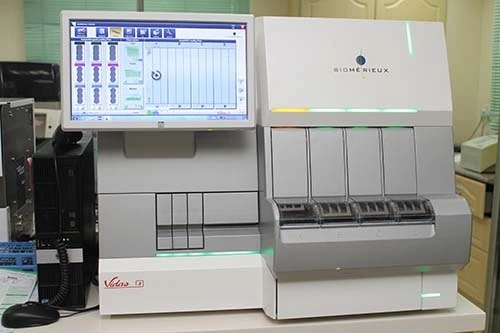
VIDAS3:
New immunoanalyzer with full traceability and automation

Yumizen H500 range:
compact analyzers designed to provide safe and easy diagnosis but also tailored to deliver accurate and reliable results.

ABX Micros ES 60
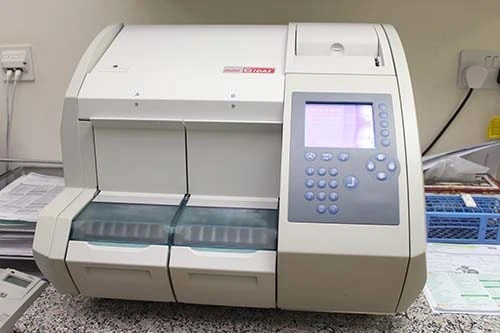
MINI VIDAS:
Compact multiparametric immunoanalyzer
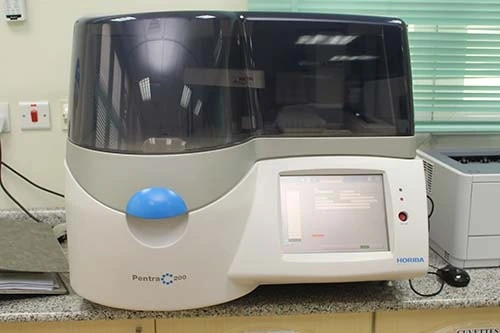
Pentra C200:
Proven technology delivering the best quality of result

ABX Pentra 400:
Pentra C400 is an extremely compact Clinical Chemistry benchtop analyzer. Its automation and continuous loading provides most accurate and rapid results.
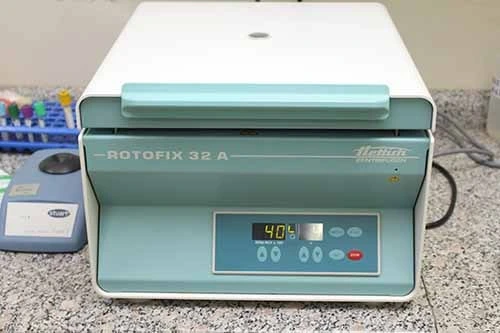
ROTOFIX 32 A :
The ROTOFIX 32 A has set the standard for a number of years. Its high performance makes it the benchmark centrifuge in its class.
It is a reliable tool for daily laboratory work in a medical practice or small hospital.

COMBISCAN 500:
a semi automated urine test strip analyzer . It is designed for bigger laboratories and for hospitals.
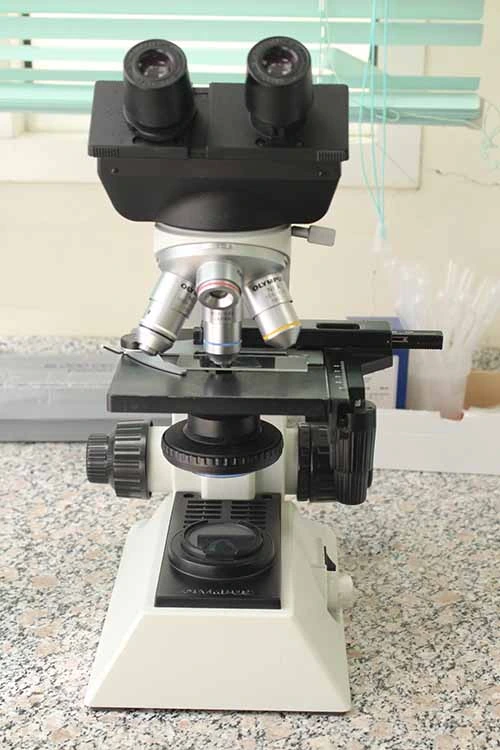
Olympus CH20 :
- Binocular
- 4X, 10X, 40X, & 100X a chromat objectives
- 6V 20Watt Halogen illumination
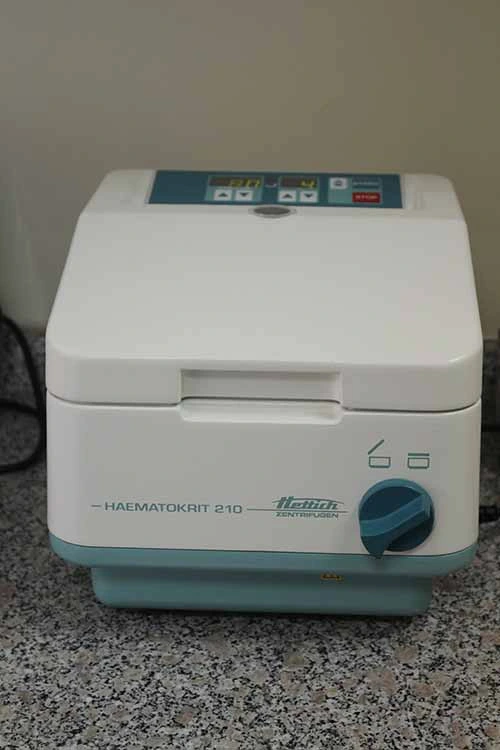
HAEMATOKRIT 210 Hematocrit Centrifuge :
Quick-entry Easy-to-read, digital display
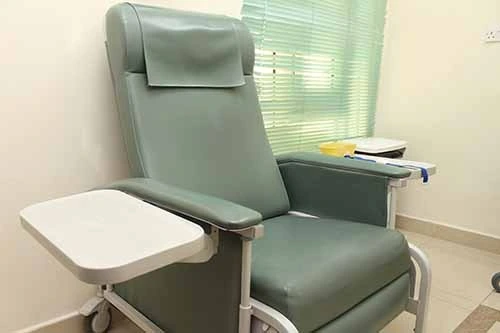
The phlebotomy chair
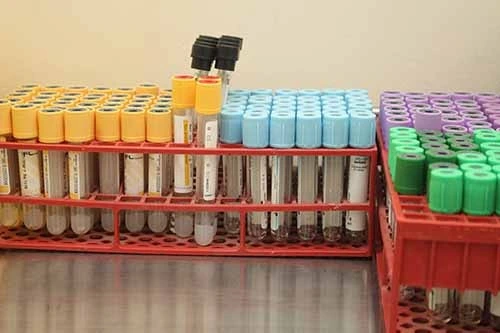
Different types of extraction tubes
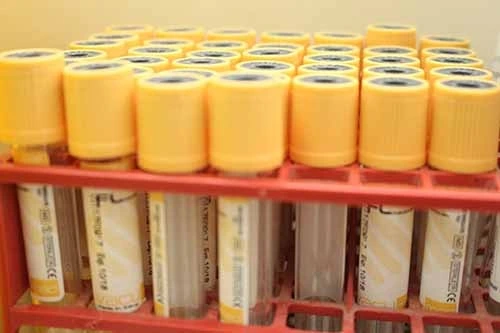
Different types of extraction tubes
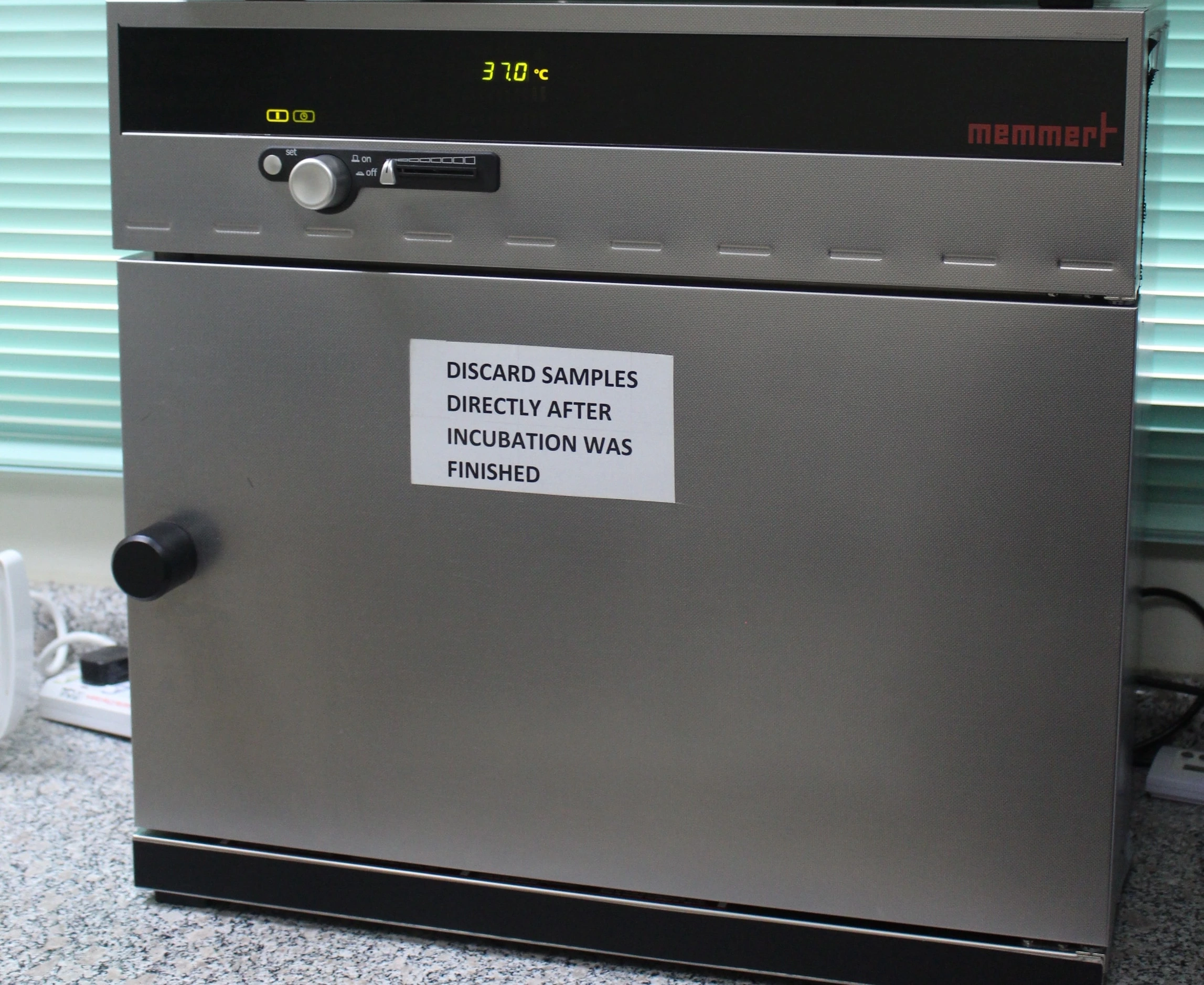
Memmert incubator:
Memmert incubators are ideal for all applications with temperatures up to +80°C; and for incubating living cultures at +37°C.
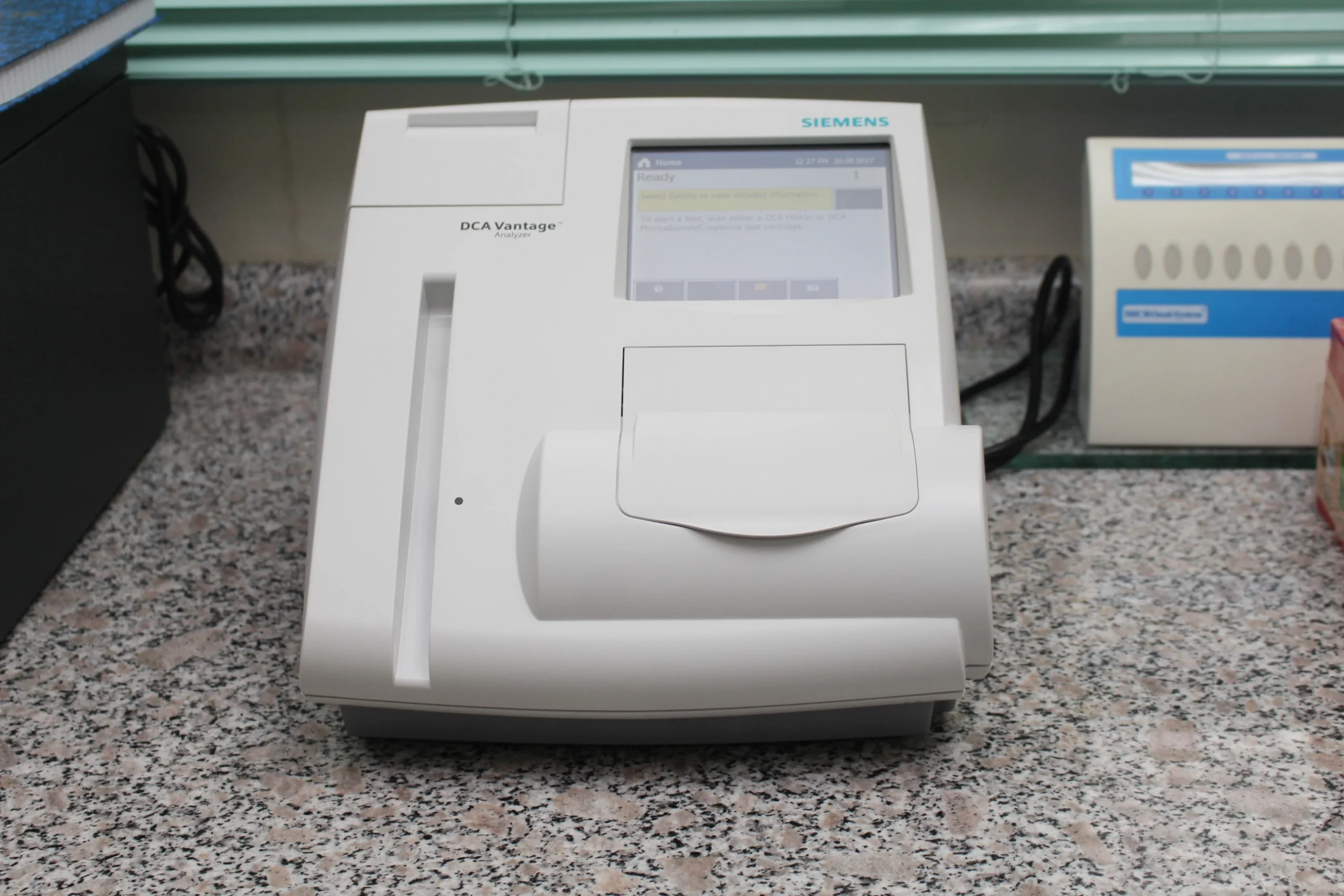
DCA Vantage Analyzer:
For the quantative measurement of the percent concentration of Hemoglobin A1c in blood and for quantative measurement of albumin, creatinine, and albumin/creatinine ratio in urine. Fast, actionable test results enable you to determine the effectiveness of a treatment plan, make therapeutic adjustments with confidence.

MICROSED-SYSTEM:
ESR measuring

The refrigerator:
Reagents storage system
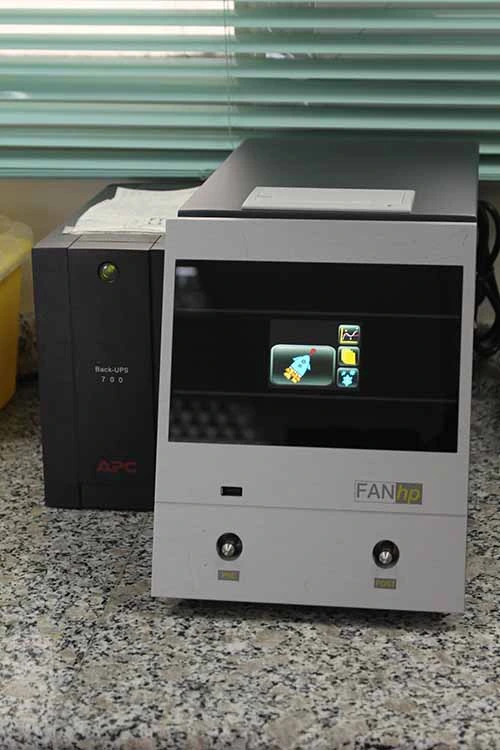
FANhp:
For an easy and reliable detection of Helicobacter pylori infections.
What does it mean to fast for my blood test?
Fasting means no eating foods or drinking liquids that may interfere with your lab test results. The period of fasting varies from 10-12 hours and should be no more than 16 hours. Fasting means no eating foods of any kind. Fasting means no coffee, no tea and no soda. You are encouraged to drink water and only water during your fast.
Why is drinking water encouraged?
It is recommended that when you are having blood drawn, you drink plenty of water to keep properly hydrated. By doing so, proper hydration helps in locating veins and preventing dizziness brought on by fasting.
What lab tests require fasting and how long do I need to fast?
Glucose, lactose, homocystiene and lipid panel are common tests that require fasting before the test can be done. Follow the instructions from your provider if you are required to fast before lab testing.
- Glucose testing requires a minimum fast of 10 hours, but no more than 16 hours.
- Homocysteine testing requires a minimum fast of 12 hours, but no more than 16 hours.
- Lipid panel testing requires a minimum fast of 12 hours, but no more than 16 hours.
- Lactose testing requires a minimum fast of 10 hours, but no more than 16 hours.
Do I need to fast or avoid any specific food or drink for urine or stool tests?
Fasting is not required for urine or stool tests. Check with your health provider for specific food or drink avoidance associated with stool or urine testing ordered.
What can I eat or drink while I fast?
You are encouraged to drink plenty of water during your fast. You are not permitted to eat anything or drink anything but water. Do not drink coffee, tea or soda.
Can I drink black coffee, tea or soda during my fast?
You are encouraged to drink plenty of water during your fast. You are not permitted to eat anything or drink anything but water. Do not drink coffee, tea or sodas.
Can I take my scheduled medications during my fast?
You may take medication as prescribed by your doctor when fasting for a lab test. Be sure that you take medication ONLY with water.
How do I collect stool specimen?
Stool Collection Instructions
If your provider has equested that you collect a stool specimen at home. Please follow these collection guidelines:
Collection Procedure:
- Collect the stool (fecal) specimen in a wide mouth container or collection “hat”.
- DO NOT MIX URINE WITH THE STOOL SAMPLE.
- Fill each container to the FILL LINE. It is important to use the portion of stool that is bloody , slimy or watery. If the stool is formed (hard), sample small amounts from each end and the middle of the specimen. Do not fill above the indicated FILL LINE. The sample may need recollecting if vial is over-filled.
- If you do not have the special containers, you can collect the sample in a clean, dry container Refrigerate the sample and deliver to the lab within 24 hours**Note: O&P must be to lab within 1 hour, Culture must be to lab within 2 hours.
- Label each container with:(1) Patient Name (2) Date of Birth (3) Date and Time of collection.
- Diaper specimens: Collect the sample in a diaper that has been lined with plastic wrap or turned inside out so the outer plastic is facing the skin. It is important that the sample does not soak into the diaper lining. Samples from a diaper without these precautions will be rejected unless the stool is hard and formed. DO NOT SEND SPECIMEN IN DIAPER.
- Your physician may order testing times 2 or 3. No more than one set of samples may becollected per day per test.
How do I collect urine specimen?
Clean Catch Urine Instructions – Female:
Important: Failure to follow instructions may cause delay in treatment and unintended expense.
1. Wash hands with soap and water.
2. Spread labia (fold of skin) apart with one hand and wipe with the towelette provided. Wipe from front to back.
3. Continue holding the labia apart. As you start to urinate, allow a small amount of urine to fall into the toilet bowl (This clears the urethra of contaminants) Do not touch the inside of the cup.
4. After the urine stream is well established, urinate into the cup. Once an adequate amount of urine fills the cup (the cup only needs to be half-full), remove the cup from the urine stream.
5. Pass the remaining urine into the toilet.
6. Screw the lid on the cup tightly (do not touch the inside of the cup or lid). Place the urine sample in the designated area/cupboard as directed by the technician .
Clean Catch Urine Instructions – Male :
Important: Failure to follow instructions may cause delay in treatment and unintended expense.
Wash hands with soap and water.
1. If uncircumcised, retract foreskin.
2. Wipe the end of penis with towelette provided. As you start to urinate, allow a small
amount of urine to fall into the toilet bowl. (This clears the urethra of contaminants). Do
not touch the inside of the cup.
3. After the urine stream is well established, urinate into the cup. Once an adequate amount of urine fills the cup (the cup only needs to be half-full), remove the cup from the urine stream.
4. Pass the remaining urine into the toilet.
5. Screw the lid on the cup tightly (do not touch the inside of the cup or lid). Place the urine sample in the designated area/cupboard as directed by the technician.
How do I collect a 24-hour urine specimen?
24 Hour Urine Collection Instructions
The accuracy of any urine test depends on proper specimen collection. There may be a certain diet or requirement for each test. See individual test for any special diet or storage requirement.
- Empty bladder first thing in the morning. Discard this first specimen and note the time. The collection time starts with an empty bladder.
- Document the start date and time on the specimen jug. From this point, collect ALL urine passed during the day and night into this container.
- On the following day, at the same hour the collection was started, empty your bladder and add this final collection to the container. The final specimen is now a 24 hour collected specimen . Document the end date and time on the specimen jug.
- Return the 24 hour specimen to the laboratory or doctor’s office as soon as possible . Maintain the specimen at the temperature it was collected at until it can be delivered to the laboratory or doctor’s office.
What should I do if I get a bruise after having my blood drawn?
When a person has blood taken, there is the potential that blood could either leak from the vein or that blood will become trapped under the skin from the procedure itself. Often there are just small bruises from the procedure, although heavy bruising can occur. The application of a cool pack or ice can help to reduce the potential of the bruise. Alternating ice and heat on the bruise site may promote healing.
What are the precautions for collection of proper sample for semen analysis?
Before the sampling:
- Avoid all sexual activity (including masturbation) that results in ejaculation for at least 2-3 days before the test. At the same time one should not avoid sexual activity for more than a week or ten days also. A long period of sexual inactivity has been reported with less active sperms. This may result in a false report of decreased motility of sperms in the report.
- One should not have too much alcohol or take any other recreational drugs for at least one week before the test.
- Always inform your doctor about any medicines or herbal supplements that you may be using.
Procedure in the Lab:
- You will be given a clean wide mouthed jar and be asked to produce a semen sample.
- Most people collect semen by self masturbation and deposit the ejaculated semen directly into the container.
- One must wash hands, use the toilet, clean the penis with normal water and dry before starting. One should also not use any lubricant for this purpose.
- You must be careful that all semen has gone into the bottle. If a few drops spill out during collection the lab staff should be informed. Do not pick up any semen drops from the floor and try to put it back.





